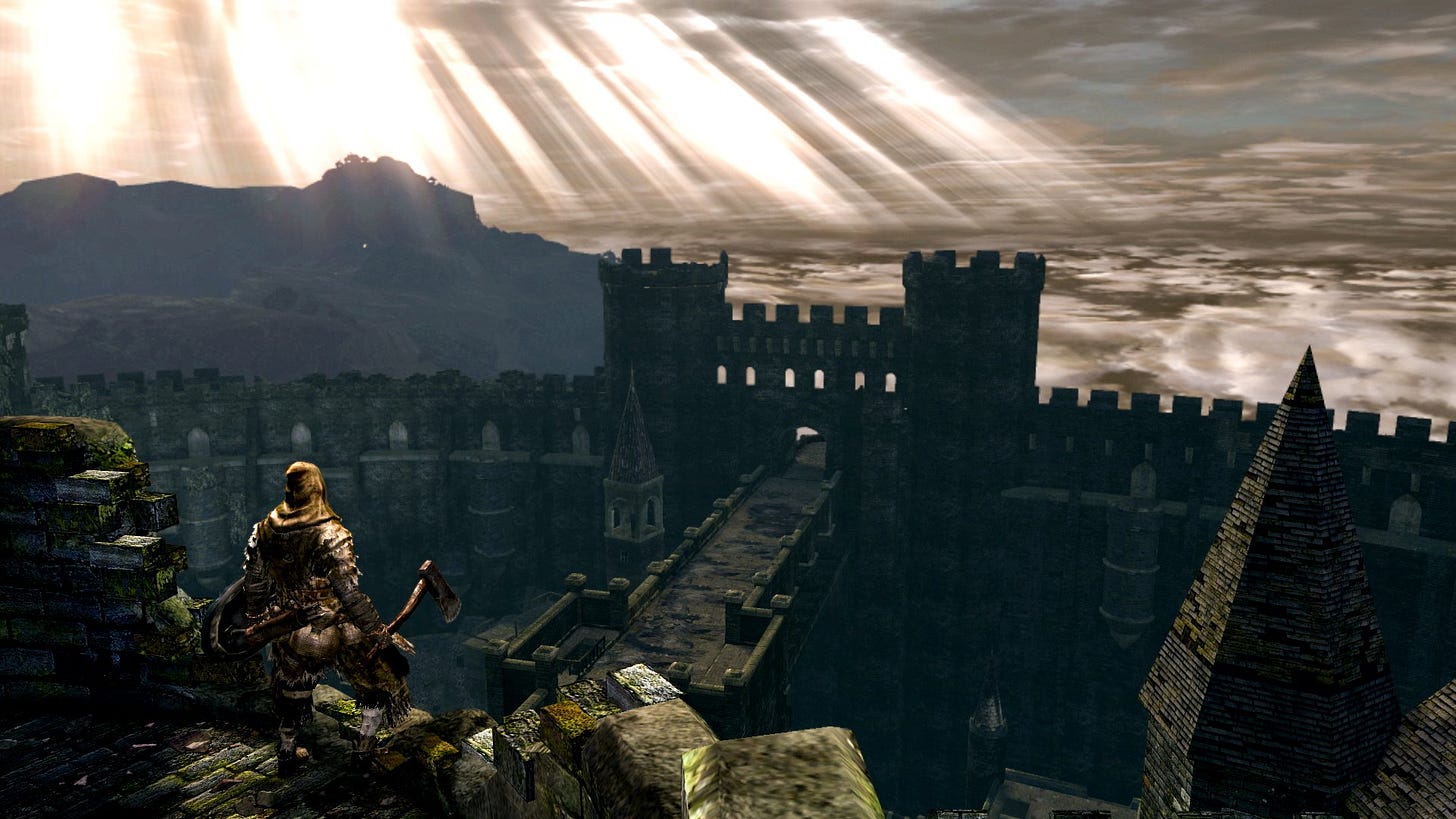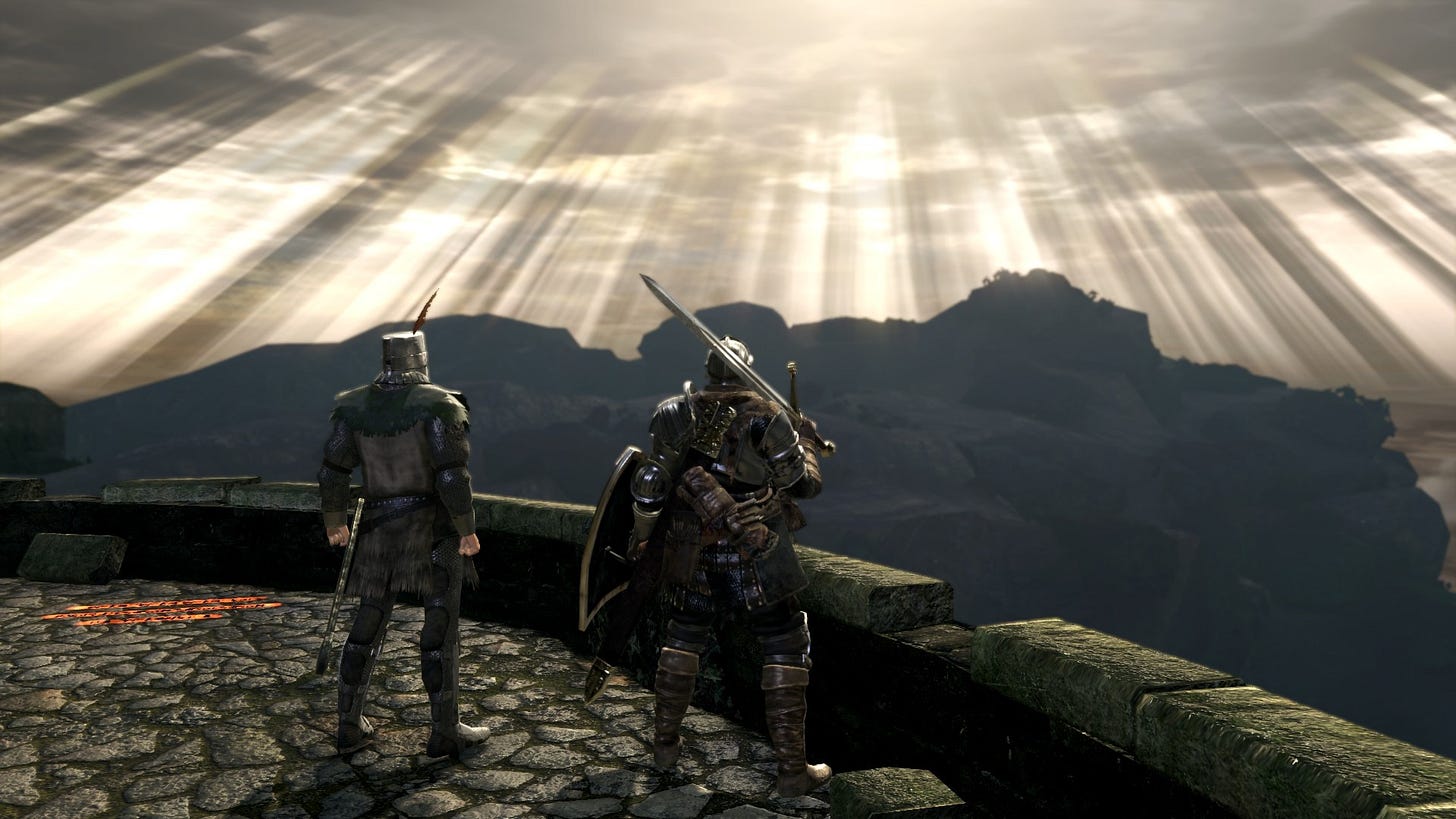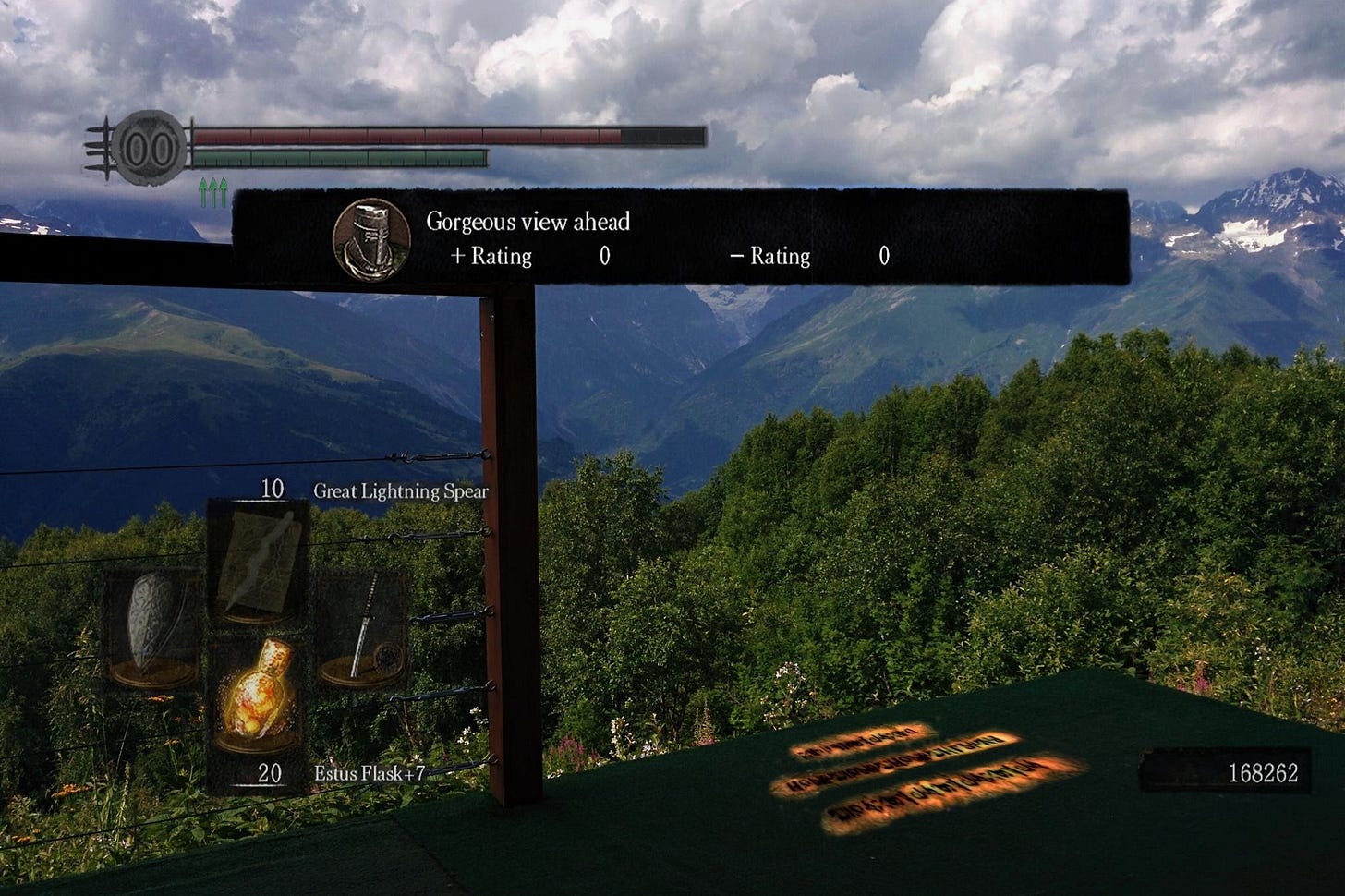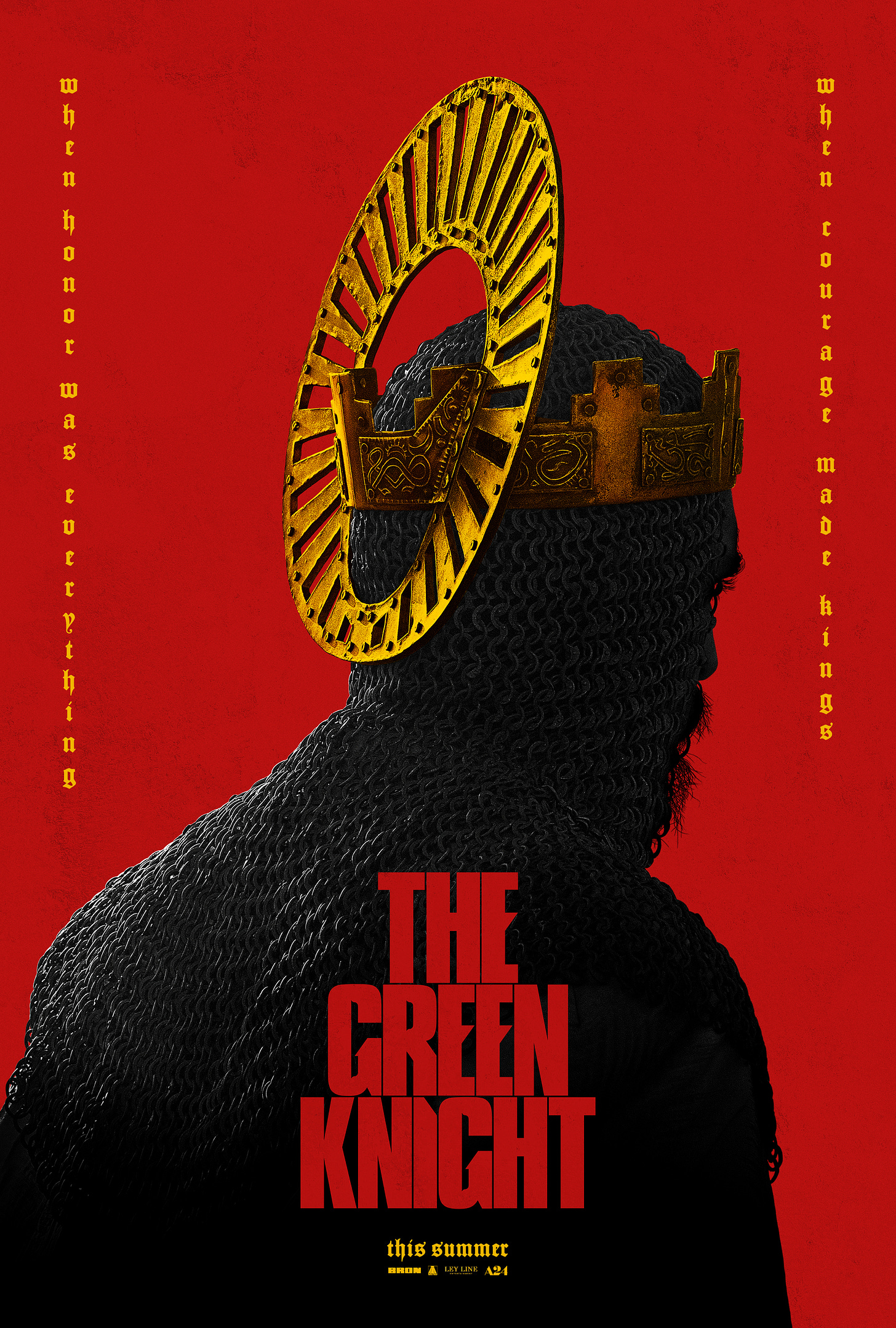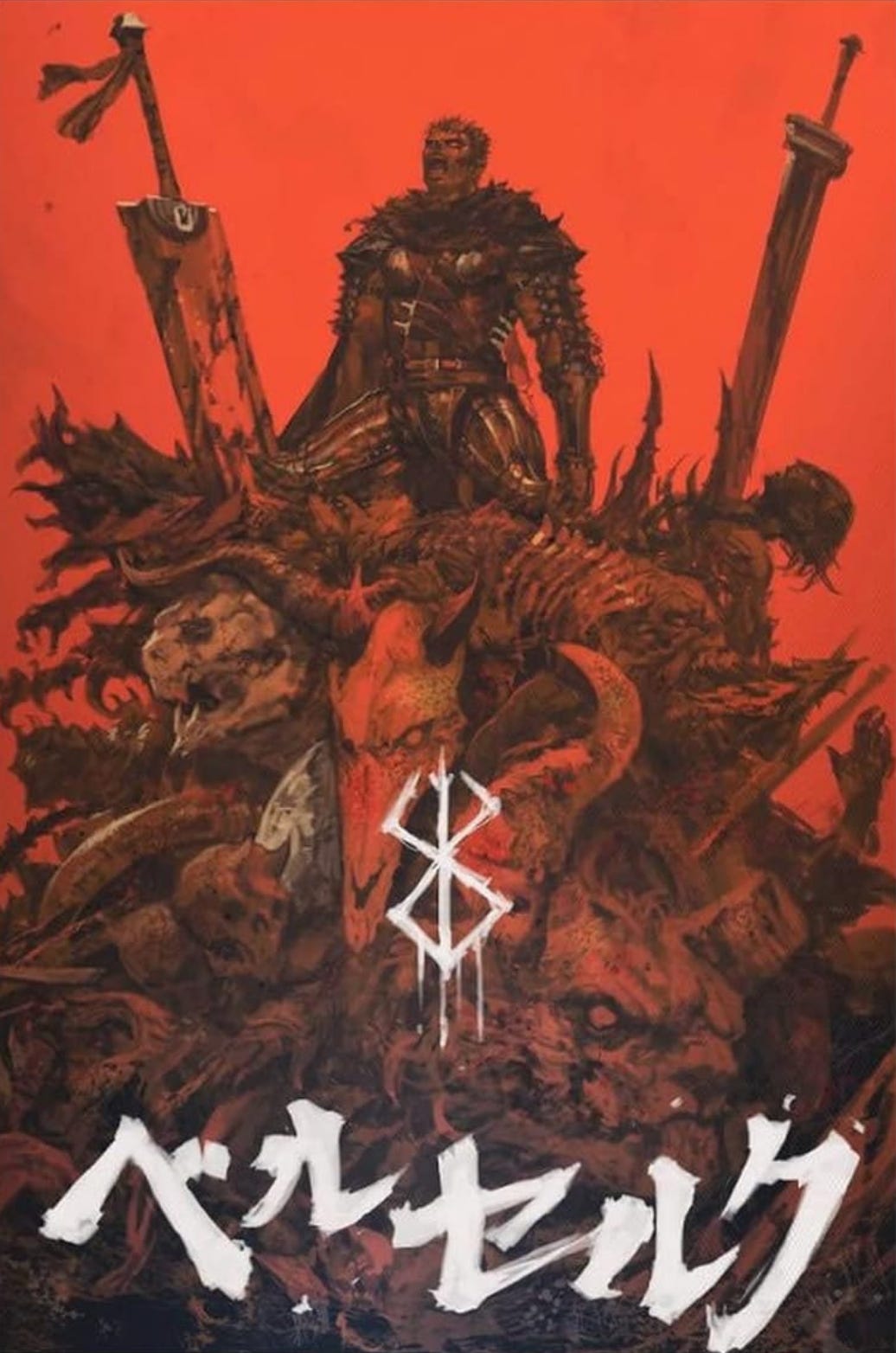Four Games That Changed My Brain Chemistry, Part 4: Dark Souls
Dark Souls
You all know what Dark Souls is by now.
For the longest time during my teenage years, I avoided playing Dark Souls. My response to its perceived difficulty was, "Do you hate fun?" But then a friend whose taste I usually aligned with recommended it, so I decided to give it a shot. I won’t dive into the topic of difficulty here, as it’s honestly the least interesting aspect of Dark Souls for me.
From the moment I started Dark Souls, the mood of the game completely captivated me. I found myself blindly dropped into this dark fantasy world, role-playing as a nameless Undead marked with a Darksign, wandering through Lordran and battling various monsters. My heart raced as I fought bosses, sweating through each encounter, all to rekindle the Flame—whatever that meant. The story felt nebulous; I didn’t really grasp why I should care or what was going on. But after a long and arduous journey, I finally defeated the first boss, the Asylum Demon, escaped The Undead Asylum, and lit the bonfire at The Firelink Shrine, where my character could rest and find a moment of peace.
A warm feeling washed over me, one I couldn't quite rationalize yet. I continued my journey and defeated the second boss, the Taurus Demon, which led me to meet the NPC Solaire of Astora. Together, we stood admiring the "grossly incandescent" scenery before us. That warmth inside me grew louder, but it still had not reached the clarity for me to contemplate on it.
"Oh, hello there. I will stay behind, to gaze at the sun.
The sun is a wondrous body. Like a magnificent father!
If only I could be so grossly incandescent!"
Solaire of Astora
I pressed on, defeating the Bell Gargoyles as my third major challenge. Climbing the tower felt important but calm, and ringing the Bells of Awakening there seemed to be a pivotal moment.
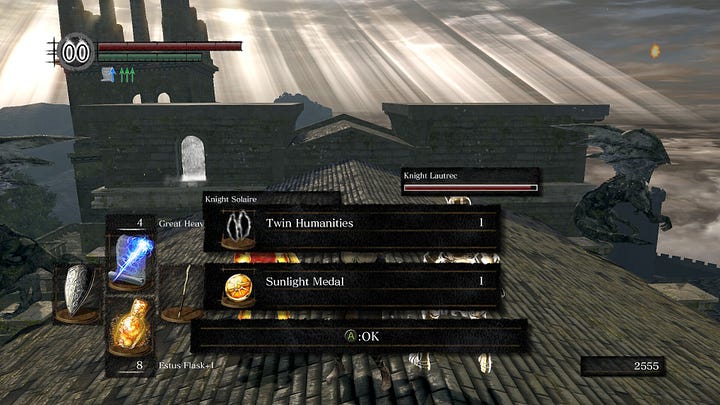
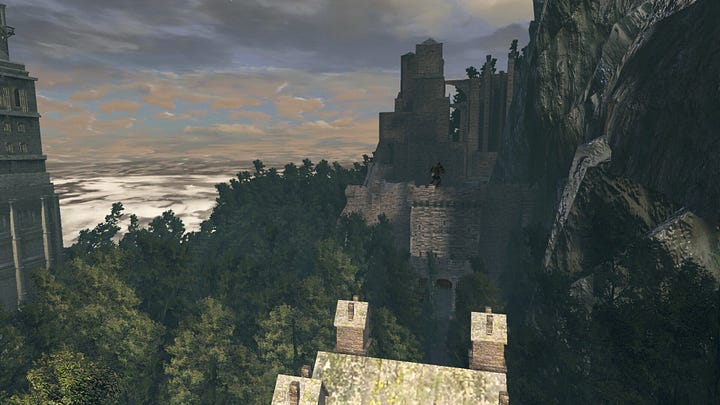
As I gazed from the tower at the landscape below, everything I'd experienced began to coalesce. The various elements I'd encountered came together in a harmonious tapestry and the beauty of Dark Souls unraveled in front of me. It resonated deeply within me, sparking a profound appreciation for the game's design, storytelling, and emotional impact. Here are my observations:
One of the most obvious but striking aspects of Dark Souls is its storytelling approach. For me, it was the first game that fully embraced diegetic narrative. There's no heavy exposition or narration outside the intro video, and the characters aren't overly expressive. Instead, the dialogue from the sparse NPCs reads more like poetry—short, layered, and shrouded in mystery. The game doesn't hold your hand; it trusts you to piece together the story on your own.
Imagine being dropped into a strange city where a major event, like a war or revolution, is unfolding. You might see a newspaper article, overhear a conversation in a cab, or witness a protest outside a government building. That's how Dark Souls reveals its narrative. The world of Lordran is desolate, but the few characters, the architecture, item descriptions, and even the atmosphere all contribute to the storytelling. You collect these puzzle pieces and gradually understand the context you're in.
Just like in all works of art, ideas are dime a dozen, true value lies in the execution of the ideas. While diegetic storytelling isn't a revolutionary concept, its execution in Dark Souls is what sets it apart. It’s something that can only be fully realized in a video game to this degree, where players can explore the world in any fashion they want, as opposed to movies that already have an inherent fixed narration to them even simply by virtue of having a deterministic sequence of frames. This is where it shines brightly. The world design is incredibly dense—not in terms of graphical fidelity, but in purpose. Although the art direction is so strong that I'm hardly bothered by aging graphics. Every structure, door, and ruin feels intentionally placed, rich with a layered history that gives Lordran the depth of a real, lived-in environment that has been developing throughout centuries. For instance, the massive steps and archways in Anor Londo suggest that the city was once inhabited by giants, even though it's nearly empty now.
In the New Londo Ruins, you encounter the massive floodgates that were used to seal the city underwater, a deliberate measure taken to contain the spread of the Abyss and the Darkwraiths. The architecture here is not just visually striking; it’s practical and purposeful, emphasizing the gravity of this defensive action. You can also spot remnants of the city’s former grandeur—large structures and bridges now submerged, hinting at a once-thriving metropolis.
These observations reveal that the architecture in Dark Souls is not merely thematic; it's designed with functional intent, offering players essential clues about the history and purpose of each location. This layered storytelling through environment design invites players to explore and piece together the narrative in a way that feels organic and immersive.
Unlocking that door in Darkroot Basin was a standout moment for me that really highlights the genius of Dark Souls' level design. The way everything is interconnected not only pulls you in but also amps up the sense of discovery. When you figure out how the Undead Burg connects to Darkroot, it’s like a lightbulb goes off—you suddenly see the game world as a cohesive space instead of just a bunch of isolated chunks being loaded and unloaded from hardware memory. You place the area relative to other areas in your mind.
This realization shifts your perspective and makes you appreciate how each area contributes to a larger narrative. It’s not just about wandering through random levels; you’re navigating a meticulously crafted environment where your choices and explorations resonate. Every corner feels alive and significant.
Another thing I really appreciated is how the game mechanics feel seamlessly integrated into the world of Dark Souls. I’ve always loved how the inventory menu is an in-game projection in Dead Space, but while Dark Souls doesn’t have that, it has its own unique touches. The way the game connects you with a subset of other players online, without you even knowing it, feels completely organic.
When someone else rings the Bell of Awakening, you hear that distant sound echoing through the air. You spot messages left by other players using the Orange Soapstone, and occasionally, you catch a glimpse of ghostly apparitions wandering around. There’s even the multiplayer aspect where you can invade other players’ games. Time in Lordran is warped and non-linear, and the reality feels like it’s crumbling, allowing these remnants from other players’ experiences to intertwine with yours. These other players are just fellow Undead on their quests to rekindle the Flame or step into the Age of Dark. It’s like you’re never truly leaving this fictional world.
A comparable example is Death Stranding, where structures built by other players are shared, fostering a sense of community and collective effort. I know I would have struggled a lot more to build highways in Death Stranding, just like I find the helpful messages in Dark Souls invaluable—some are genuinely useful, while others are just there for a laugh.
I’ve been talking about that growing warmth I felt during my playthrough, so let’s unpack it. I’ve always preferred idealized fantasy worlds, like The Lord of the Rings, over more deconstructed ones, like Game of Thrones. Sure, I enjoyed watching Game of Thrones, but more as a drama series than a true fantasy experience. Its somewhat grounded, plausible nature never satisfied me—I crave those extreme, idealized versions. If it’s a dark fantasy with Bigger Than Thou themes, then I’m all in for that treat.
This preference is probably why I never got into The Witcher 3. I’m sure it’s a fun game, but the bright, sometimes jolly fantasy world just doesn’t resonate with me. The same goes for Wheel of Time. But the world of Dark Souls? It feels like it was crafted specifically for my tastes. The world of Dark Souls is bleak, it's dark, it's oppressive, it's decaying—ancient castles, crumbling cathedrals, and desolate landscapes inhabited by hollowed souls and monstrous beings, each a reminder of the fall of once-mighty gods and civilizations.
The atmosphere is thick with despair, yet there’s a quiet beauty in this fading grandeur. It feels peaceful, even tranquil. Gazing up at the sky, where the sun breaks through the clouds in a dramatic fashion, brings a sense of hope and beauty amidst the suffocating darkness. It’s all incredibly dreamy, creating that warmth inside me as I explore this hauntingly beautiful world.
The melancholy of broken dreams permeates every corner of Dark Souls' locations, creating an eerie vibe that hangs over each landscape. The world is populated by various monsters, demons and undead, with barely more than twenty living humans scattered throughout this vast realm. It feels as though this world exists solely for your observation—does it even exist without an observer? It’s fitting that so few unhollowed souls are left to experience Lordran in its state of decay, as if the entire realm is barely holding itself together, on the verge of complete collapse.
Time itself seems warped here, further emphasizing the damage that’s been done. This sense of desolation is beautifully underscored by an ambient score that drips with melancholy. I think this sparse human presence only amplifies the value of existence and community, fostering a sense of camaraderie that transforms individual sorrow into a collective journey. In this crumbling world, each encounter feels significant, as if every connection—no matter how fleeting—holds weight in the face of overwhelming despair.
For fans of the Dark Souls vibe, I'd definitely recommend checking out the Berserk anime (1997–1998) or diving into the manga if that's more your style. The influence of Berserk on Dark Souls is pretty well-known, and you can see it clearly in the character and weapon designs, not to mention the overall atmosphere of the world. If you're into manga, another great suggestion is Blame!—though it’s more of a horror sci-fi, it shares that eerie isolation and decaying world theme that resonates strongly with Dark Souls. Both of these works capture that haunting sense of beauty and despair.
For film lovers, I'd highly recommend The Green Knight (2021). It beautifully captures a knight's journey through a dreamy fantasy world while inviting you to contemplate life, existence, purpose, and the passage of time. The film is rich with strong symbolism, exploring themes of the cycle of life and death, isolation, and, of course, a deep sense of melancholy. It resonates with the same haunting beauty and introspection found in Dark Souls, making it a perfect complement to that experience.
When it comes to games, there are definitely the other titles in the Dark Souls series, along with Bloodborne and Elden Ring, which I have to come out... I haven't played yet, despite the years that have gone by. I do plan to dive into them. Then there’s the whole wave of soulslike games that have sprung up, a genre defined by Dark Souls! But honestly, I'm not too keen on exploring those. So... keep an eye out for Of Love and Eternity. Seems like a promising non-soulslike game that feels somewhat Dark Souls-ish.
Four Games That Changed My Brain Chemistry, Part 1: Disco Elysium
Spoiler warning: This essay contains minor spoilers for Disco Elysium
Four Games That Changed My Brain Chemistry, Part 2: The Witness
Spoiler warning: This essay contains major spoilers for The Witness (2016)
Four Games That Changed My Brain Chemistry, Part 3: Kentucky Route Zero
Spoiler warning: This essay contains few spoilers for Kentucky Route Zero


